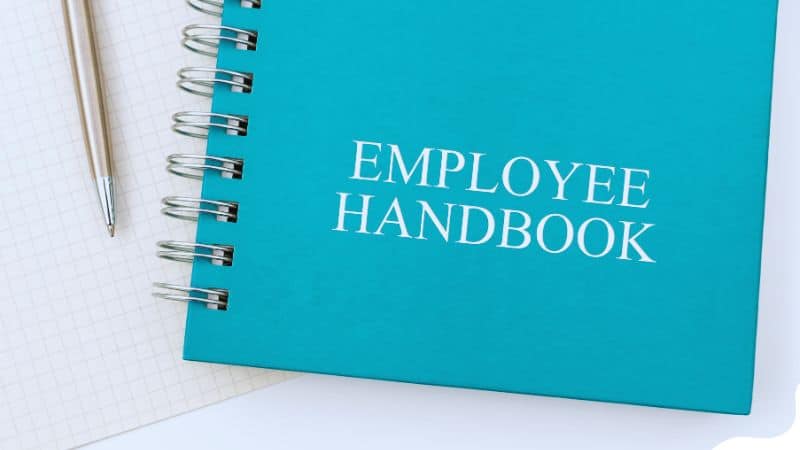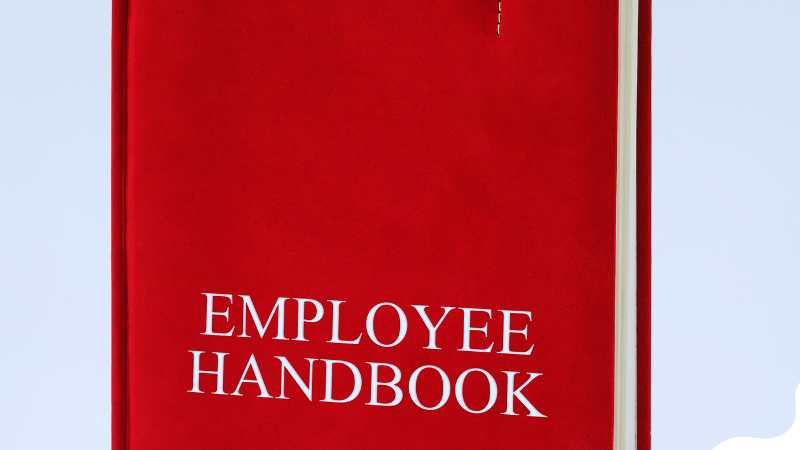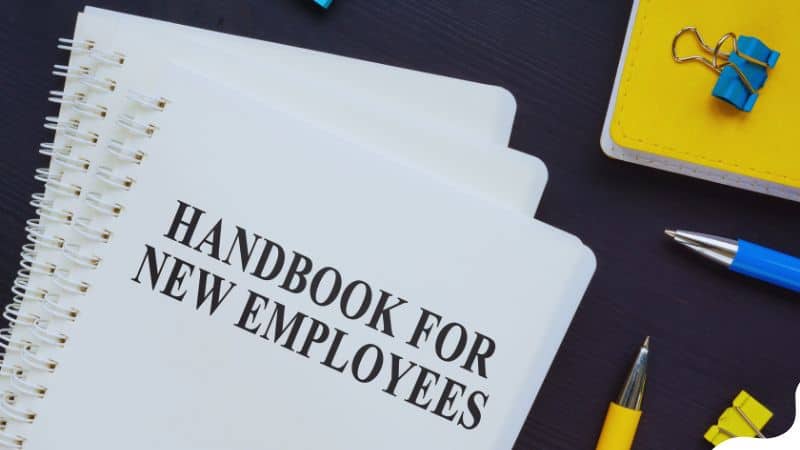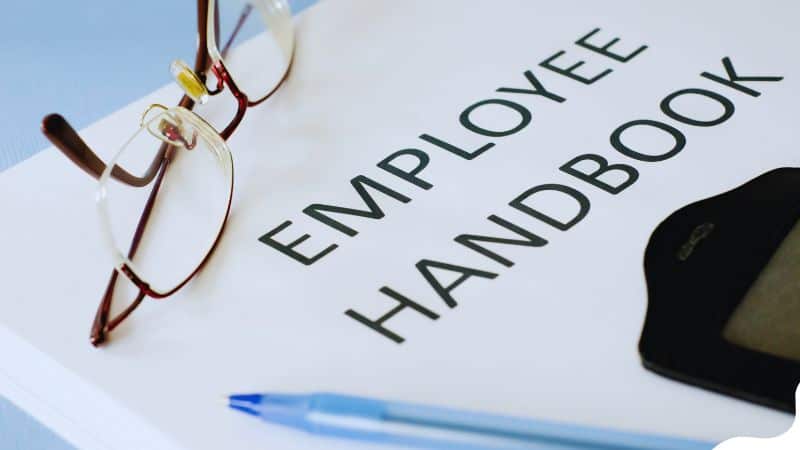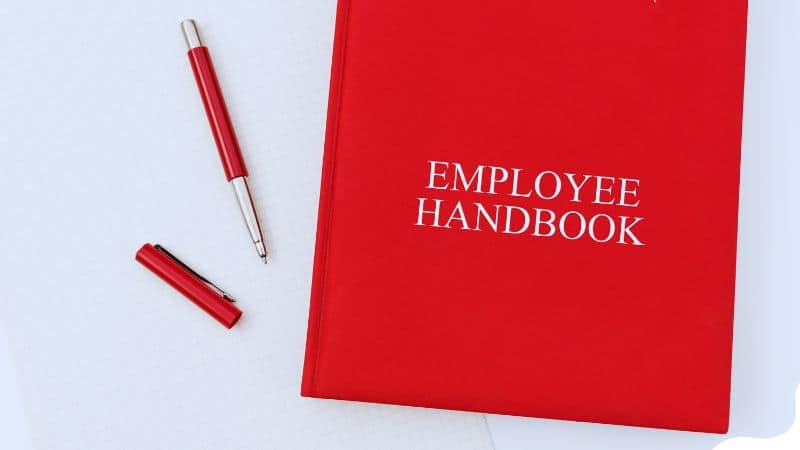When companies are not clear about employee relations, misunderstandings and conflicts can arise. Employees may feel unsure about how to voice concerns, resolve issues, or seek help, leading to frustration and lower morale.
A lack of clarity can also result in unfair treatment, favoritism, or inconsistent handling of problems, which damages trust between employees and management. This can cause tension, reduced productivity, and even higher employee turnover.
Clear employee relations policies create fairness, ensure open communication, and help maintain a positive, supportive workplace. Without them, the company risks a breakdown in teamwork and overall employee satisfaction.
Employee Relations
Employee relations is about how the company and its employees work together. It covers communication, handling problems, and building a positive workplace where everyone feels respected.
Including employee relations in the handbook is important because it helps set clear expectations on how issues like conflicts or complaints should be handled. It ensures fairness and transparency in the workplace.
With clear guidelines, everyone knows their rights and responsibilities, which helps prevent misunderstandings and creates a healthy, supportive work environment.
Step 1: Outline the Grievance Procedure
Start by explaining the process employees should follow if they have a complaint or concern. This might involve speaking to a supervisor, contacting HR, or using an official grievance form. Make sure the process is clear, confidential, and accessible.
Example:
“If you have a concern or complaint, we encourage you to raise it through our grievance procedure. Start by discussing the issue with your immediate supervisor. If the issue is not resolved, or if it involves your supervisor, you can file a formal grievance with HR. All grievances are handled confidentially and are taken seriously to ensure a fair resolution.”
Step 2: Describe the Disciplinary Actions
Next, explain the disciplinary process for employees who violate company policies. This section should outline the types of infractions that may lead to disciplinary action, the steps involved (such as warnings, suspension, or termination), and the importance of following company rules.
Example:
“At [Company Name], we believe in maintaining a positive and productive work environment. Disciplinary actions may be taken if an employee violates company policies or behaves in a manner that disrupts the workplace. The disciplinary process typically involves the following steps:
- Verbal Warning: For minor infractions, a verbal warning may be issued.
- Written Warning: If the behavior persists, a written warning will be given, outlining the specific issue and the expected improvement.
- Suspension: In cases of serious misconduct, an employee may be suspended without pay for a specified period.
- Termination: Repeated violations or severe misconduct may result in termination of employment.”
Step 3: Highlight Rewards and Recognition
Recognizing and rewarding employees for their contributions is essential for maintaining morale and motivation. This section should describe the company’s reward and recognition programs, including employee of the month awards, bonuses, or other forms of recognition.
Example:
“We believe in recognizing the hard work and dedication of our employees. Our rewards and recognition program includes:
- Employee of the Month: Each month, we celebrate an employee who has demonstrated exceptional performance or made a significant contribution to the company.
- Performance Bonuses: Employees who consistently exceed their targets or contribute to the company’s success may be eligible for performance bonuses.
- Service Awards: Long-serving employees are recognized for their loyalty and commitment with service awards presented at company events.”
Step 4: Encourage Open Communication
End the chapter by encouraging open communication between employees and management. Let employees know that their opinions matter and that the company values their input in making the workplace better.
Example:
“At [Company Name], we value open communication and believe that everyone’s voice should be heard. We encourage employees to share their ideas, suggestions, and concerns with their supervisors or HR. By working together, we can create a better workplace for everyone.”
Sample Chapter 8
Chapter 8: Employee Relations
Grievance Procedure
If you have a concern or complaint, we encourage you to raise it through our grievance procedure. Start by discussing the issue with your immediate supervisor. If the issue is not resolved, or if it involves your supervisor, you can file a formal grievance with HR. All grievances are handled confidentially and are taken seriously to ensure a fair resolution.
Disciplinary Actions
At [Company Name], we believe in maintaining a positive and productive work environment. Disciplinary actions may be taken if an employee violates company policies or behaves in a manner that disrupts the workplace. The disciplinary process typically involves the following steps:
- Verbal Warning: For minor infractions, a verbal warning may be issued.
- Written Warning: If the behavior persists, a written warning will be given, outlining the specific issue and the expected improvement.
- Suspension: In cases of serious misconduct, an employee may be suspended without pay for a specified period.
- Termination: Repeated violations or severe misconduct may result in termination of employment.
Rewards and Recognition
We believe in recognizing the hard work and dedication of our employees. Our rewards and recognition program includes:
- Employee of the Month: Each month, we celebrate an employee who has demonstrated exceptional performance or made a significant contribution to the company.
- Performance Bonuses: Employees who consistently exceed their targets or contribute to the company’s success may be eligible for performance bonuses.
- Service Awards: Long-serving employees are recognized for their loyalty and commitment with service awards presented at company events.
Open Communication
At [Company Name], we value open communication and believe that everyone’s voice should be heard. We encourage employees to share their ideas, suggestions, and concerns with their supervisors or HR. By working together, we can create a better workplace for everyone.

